This post may contain affiliate links. Please read our disclosure policy.
Easy Paleo Gochujang recipe inspired by Korean gochujang sauce. Looking for a gochujang substitute that’s gluten-free, soy-free, Vegan, Whole30, and great for gochujang chicken, beef, or pork recipe? This Paleo Gochujang recipe will be the perfect substitute to satisfy your cravings!
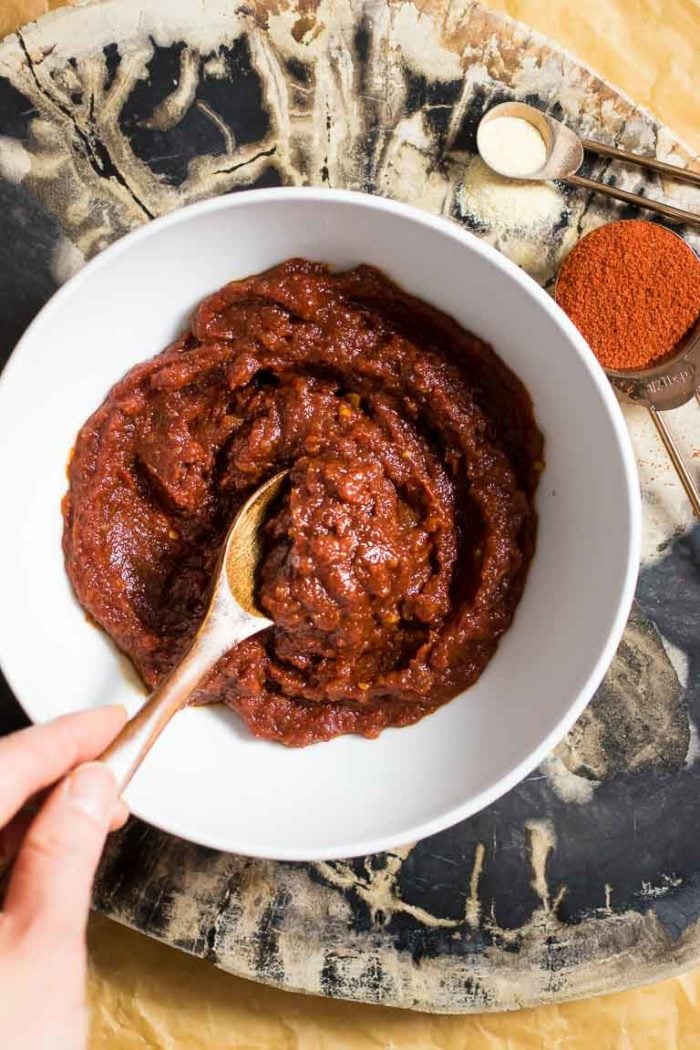
Table of Contents
- Paleo Gochujang (gluten-free, soy-free, Whole30)
- What is gochujang?
- How to make Easy Paleo Whole30 Gochujang Sauce
- How does Gochujang taste ?
- What is gochujang substitute (soy-free, cornstarch-free, no added sugar)
- Dishes you can make with Gochujang Sauce
- More Low-Carb and Whole30-Inspired Korean Flavors
- Paleo Gochujang (Korean-inspired Red Chili Paste)
Paleo Gochujang (gluten-free, soy-free, Whole30)
Of all of the Asian cuisine cultures, I’m most fascinated by Korean cuisine. My mother’s side of the family came from a providence in China that’s very close to today’s North Korea so naturally,x I grew up eating many Korean-influenced dishes. From my Paleo Easy Kimchi, Korean Zucchini Sides, to today’s Paleo Gochujang, and Gochujang Kimchi Cauliflower Fried Rice.
What is gochujang?
Gochujang AKA Korean red chili paste is a fermented condiment. It’s sweet, savory, and a little bit spicy. According to Wikipedia, “Gochujang’s primary ingredients are red chili powder, glutinous rice powder, powdered fermented soybeans, and salt.” It is used in many dishes such as bibimbap (Korean rice bowls), in soups, stews, and marinated dishes.
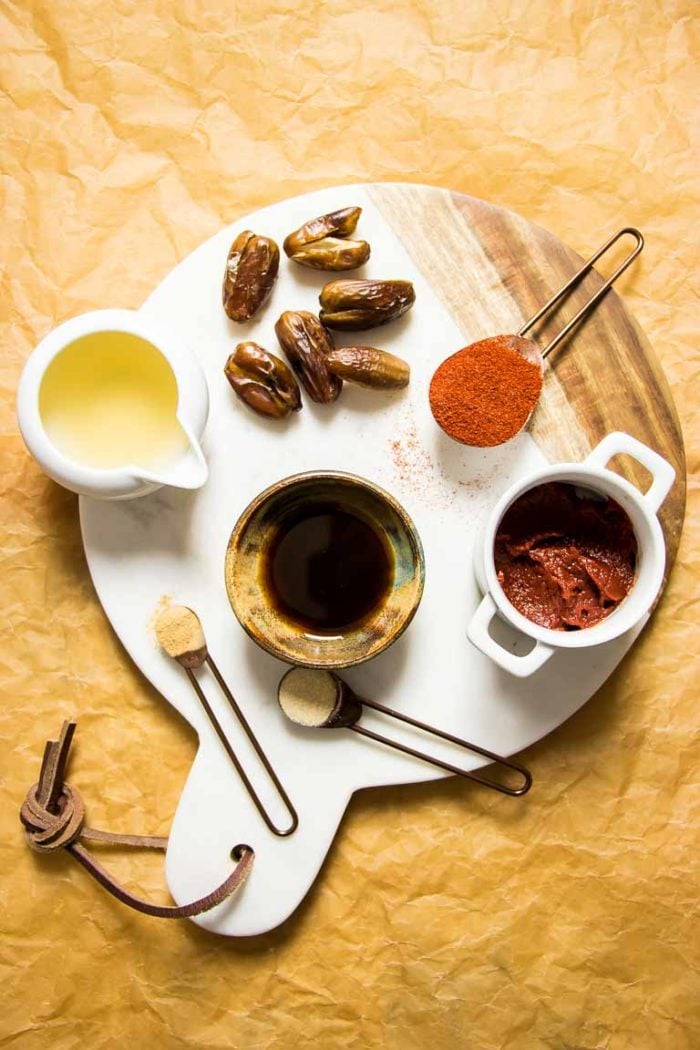
Save This Recipe
How to make Easy Paleo Whole30 Gochujang Sauce
To make Paleo Gochujang you’ll need –
- Medjool dates, pitted
- Gochugaru (Korean red pepper powder)
- Coconut aminos
- Apple cider vinegar plus water
- Onion and garlic powder
- Tomato paste
Blend everything in a small (4-cup) food processor until smooth. My easy Paleo gochujang is gluten-free, soy-free, Whole30, and Vegan friendly.

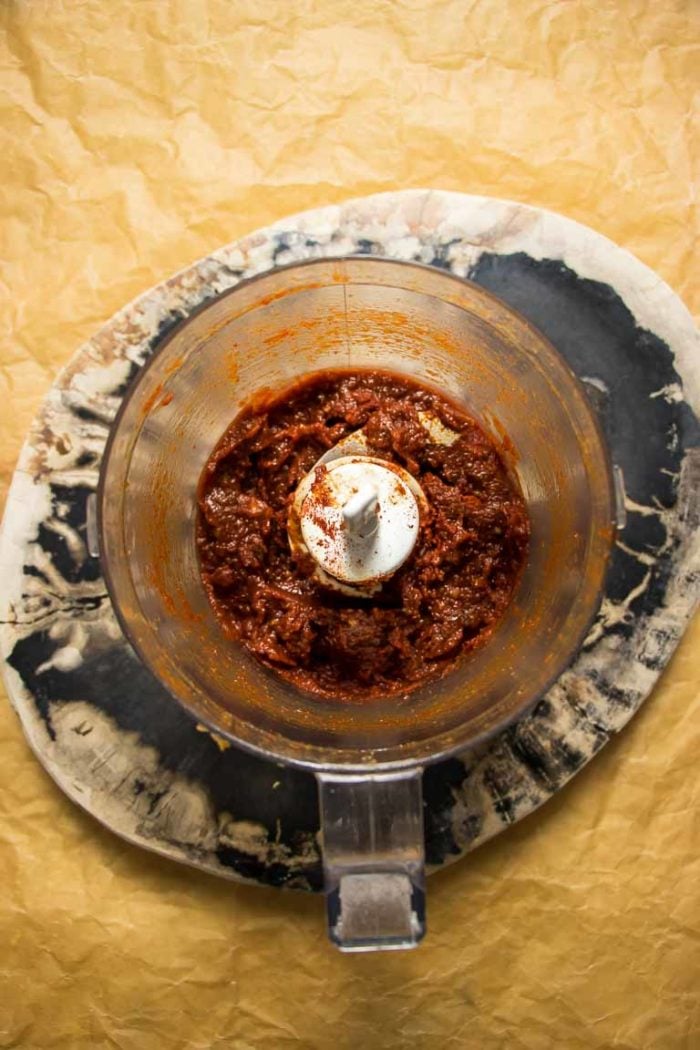
How does Gochujang taste ?
Gochujang is sweet, savory, and little bit spicy. It has an earthy sweet taste with a hint of heat from the red chilies. It adds depth and extra umami flavor to stews and marinades for meat dishes. Some people compare gochujang to sriracha but sriracha has a much stronger garlic tasty that you won’t find in gochujang.
Gochujang is great for marinated beef, pork, or chicken. I personally also like to use it in my Kimchi cauliflower fried rice (recipe to come later this week), add to scrambled eggs, mix with mayonnaise for gochujang mayonnaise. Seriously try my Paleo gochujang for any dishes you’d like extra umami boost !
What is gochujang substitute (soy-free, cornstarch-free, no added sugar)
Since soy and miso (and chickpea) paste aren’t Paleo, for Paleo gochujang substitute I use pitted medjool dates to make a paste-like consistency. The dates also add natural sweet flavor to gochujang. Coconut aminos adds a depth of Umami flavor, tomato paste and apple cider vinegar give a small dose of acidity.
This faux version of Paleo Gochujang has a similar flavor profile to the real gochujang however, it will not replicate the flavor complexity of the real version.
If, however, you are looking for a quick, easy, and fuss-free version while also Paleo Whole30 and Vegan, my Paleo Gochujang will be sure to delight !
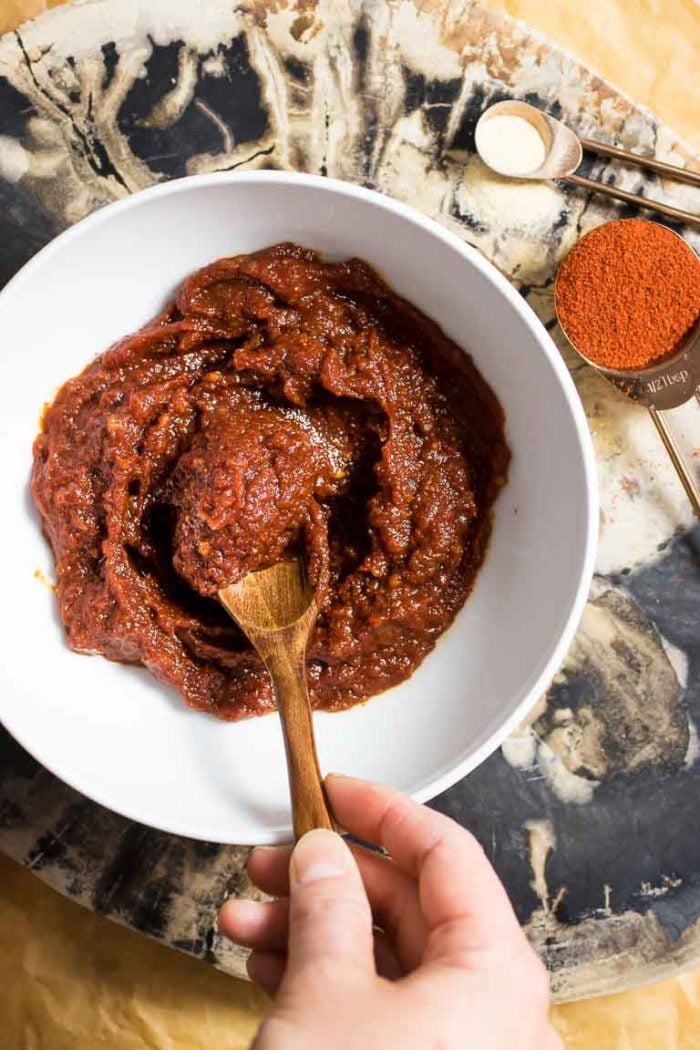
Dishes you can make with Gochujang Sauce
There are many ways you can use gochujang paste. For example, use it to season salmon like my Whole30 Baked Salmon or use the paste to make the Korean-inspired Italian dish Gochujang pasta. It’s super creamy and delicious. You can also add the paste to Kimchi Cauliflower Fried Rice to make your kimchi fried rice taste more authentic!
More Low-Carb and Whole30-Inspired Korean Flavors
So my friends ! Paleo Whole30 gochujang is –
Naturally sweet
Savory
Hint of spicy
Easy
No cook
No starch
Paleo, Whole30, Vegan, Gluten-free
If you give this Paleo Gochujang a try, let me know! Leave a comment and rate the recipe. And don’t forget to take a picture and tag it #IHeartUmami on Instagram. I’d love to see what you come up with. XOXO!
Paleo Gochujang (Korean-inspired Red Chili Paste)

Video
Ingredients
- 6 whole medjool dates pitted
- 3 tbsp water
- 2.5 tbsp apple cider vinegar
- 2-3 tsp gochugaru korean red pepper chili powder (I use 4 tsp) (alt. 1-1.5 tsp cayenne pepper powder)
- 2.5 tbsp tomato paste no salt and sugar added
- 2 tbsp coconut aminos
- ½ tsp garlic powder
- ½ tsp onion powder
- Little salt to taste
Instructions
- Use your hands to roughly break the pitted dates to smaller pieces. Blend with 3 tbsp water in a small (4-cup) food processor until the dates are finely chopped to small bites.
- Add the rest of ingredients. Pulse and toss a few times until smooth (no fruit chunks). You might need to scrape the bowl a few times with a food scraper until the paste is creamy smooth.
- Taste and see if you’d like to add more salt, coconut aminos, gochugaru, or vinegar. The flavor profile should be sweet, savory, and slightly spicy. Store in glass jar container in the fridge until ready to use. Best finish in 3 weeks for best flavor.
Nutrition
Nutrition information is automatically calculated, so should only be used as an approximation.
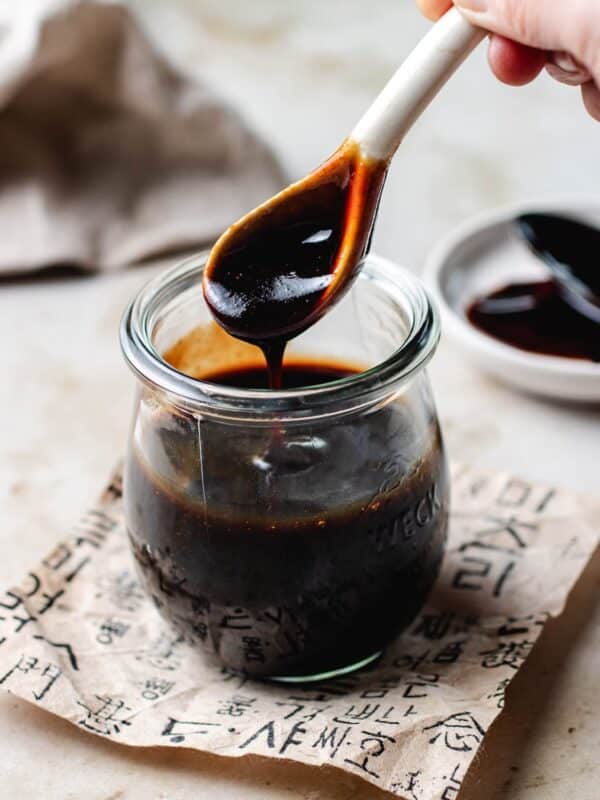
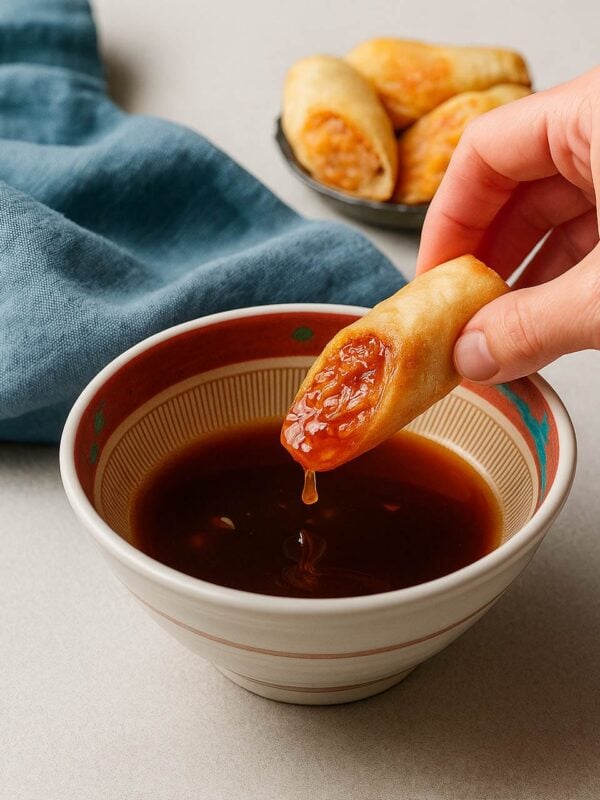
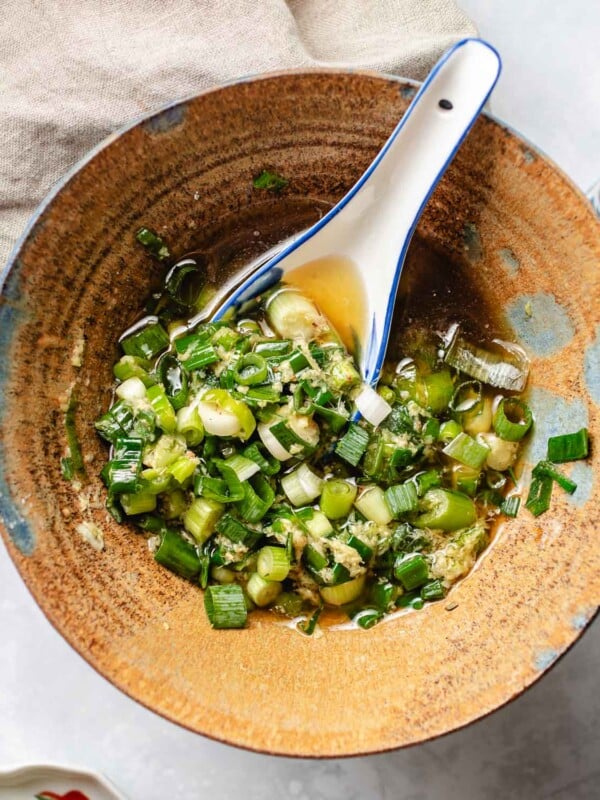
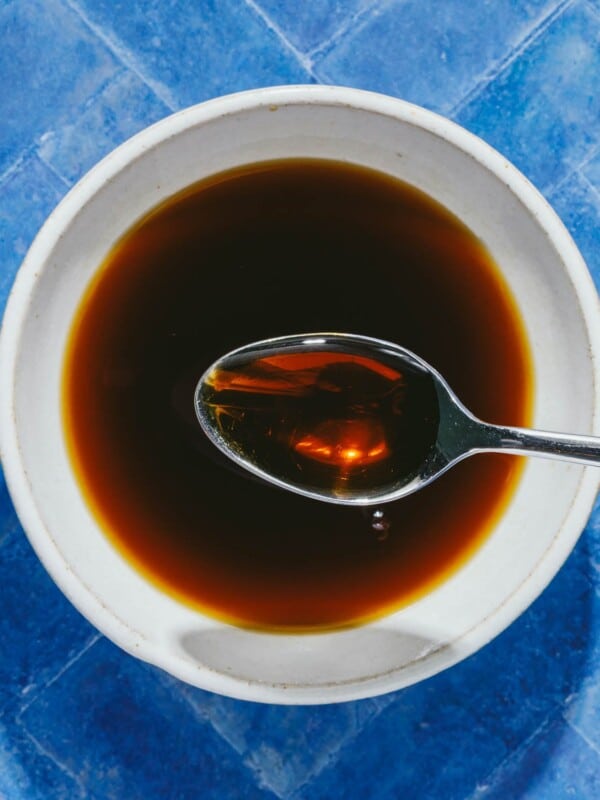









I love this so much! My question is, would you be able to make a fermented version? What would you do?
Robin Meek
Thank you so much. For the fermented version, you’ll need quite a few specialty ingredients though. For example: barley malt powder, fermented soy bean powder, sweet rice flour…etc. I believe most of them you can get at Korean grocery stores such as H-Mart. The past will take about 60-90 days to ferment.
I made this and it is delicious! I’ve used it in a few recipes so far. A question…can this be frozen for future use? Thank you!
Thank you, Wendy! I haven’t tried it yet but I don’t see why you can’t. I recommend freezing them in ice cube trays so this way it’ll be easier (and faster) to defrost.
Thank you for this soy and gluten-free recipe! I made it today. I would love to make the traditional version, as I love fermenting things, but we don’t eat soy and we are also (recently) a gluten-free household! So I would never be able to make the traditional version, or even buy it! Now I can make all of the delicious Korean dishes that require gochujang! Oh, instead of the coconut aminos, I used a pineapple vegetarian fish sauce I found at a local Asian market, and I think it turned out just as well!
I love your recipes, easy to make and SO much better then store-bought. I did this today and it is so good!